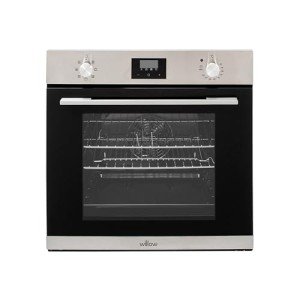The Ultimate Guide to Buying a Built-In Oven
In the realm of contemporary cooking appliances, built-in ovens stand out for their seamless combination into kitchen cabinets, visual appeal, and advanced cooking technologies. They supply a myriad of features and a structured style, dealing with both cooking lovers and everyday cooks. Nevertheless, choosing the best built-in oven can be overwhelming given the wide range of alternatives readily available in the market. This post acts as a detailed guide, highlighting crucial considerations when purchasing a built-in oven, popular functions, and answers to often asked concerns (FAQs).
Why Choose a Built-In Oven?
Built-in ovens offer various benefits, consisting of:
- Space Efficiency: They are developed to suit existing cabinets, enhancing kitchen area.
- Aesthetic Appeal: With a variety of styles and finishes, built-in ovens improve the overall appearance of a kitchen.
- Advanced Features: Many come equipped with state-of-the-art technology, making cooking much easier and more precise.
- Customization: Built-in ovens can be set up at eye level or listed below counter height, offering versatility based on individual preference.
Secret Considerations When Buying a Built-In Oven
Here are necessary aspects to think about before purchasing:
1. Size and Dimensions
Before picking a built-in oven, it is vital to determine the offered space. Requirement built-in ovens normally fall into two main categories:
| Oven Size | External Dimensions | Internal Capacity |
|---|---|---|
| Single | 24-30 inches broad | 3-5 cubic feet |
| Double | 30-36 inches large | 5-10 cubic feet |
Make sure that the chosen model fits your cabinets both in width and height.
2. Kind of Oven
Built-in ovens been available in different types, consisting of:
- Conventional Ovens: Uses heating components above and below for basic baking and roasting.
- Convection Ovens: Employs a fan to circulate hot air, offering even cooking.
- Wall Ovens: Installed vertically at eye level for easier gain access to.
- Steam Ovens: Uses steam to cook food, maintaining nutrients and moisture.
3. Fuel Type
Built-in ovens are available in different fuel types:
- Electric: Often heats up more equally, perfect for baking.
- Gas: Offers instant temperature control, excellent for roasting and broiling.
- Double Fuel: Combines the very best of both worlds with a gas cooktop and electric oven.
4. Features and Technology
Modern built-in ovens featured a myriad of features that enhance the cooking experience:
- Smart Technology: WiFi-enabled models permit users to control the oven from another location by means of an app.
- Self-Cleaning: Reduces the effort needed to maintain a tidy oven.
- Delay Start: Lets you program the oven to start cooking at an established time.
- Multiple Cooking Modes: Options for baking, broiling, roasting, and more.
5. Brand name and Price
Selecting a reliable brand name can make sure quality and dependability. Going On this page among different brand names can assistant in decision-making. Here's a short summary of popular brands and their cost ranges:
| Brand | Avg. Rate Range | Significant Features |
|---|---|---|
| Bosch | ₤ 1,000 - ₤ 3,000 | Streamlined style, reputable performance |
| Whirlpool | ₤ 800 - ₤ 2,500 | Easy to use controls |
| KitchenAid | ₤ 1,200 - ₤ 3,500 | Innovative features, trendy designs |
| GE Appliances | ₤ 900 - ₤ 2,800 | Range of sizes and alternatives |
Installation Considerations
Installation of a built-in oven is an essential element that ought to not be ignored. It's highly advised to hire an expert when setting up a built-in oven. They can attend to electrical or gas line issues and make sure that the oven is fitted safely in the kitchen cabinetry.
Maintenance Tips
Preserving a built-in oven is important to extend its life-span and efficiency.
- Clean Regularly: Wipe down surface areas and avoid letting spills end up being baked-on.
- Usage Appropriate Cookware: This avoids damage to interior surfaces and enhances cooking performance.
- Check Seals: Inspect the door seals routinely for wear and tear to keep energy effectiveness.
Frequently Asked Questions About Built-In Ovens
1. How do I understand which size built-in oven to buy?
Procedure the area you have offered and compare it to the oven measurements. Requirement sizes typically range from 24 to 30 inches for single ovens.
2. Can I set up a built-in oven myself?
While it's possible to install a built-in oven without professional assistance, hiring a skilled specialist is advised for security, specifically with gas or electrical connections.
3. What is the typical life-span of a built-in oven?
Normally, built-in ovens last about 10-15 years with correct maintenance.
4. Are built-in ovens energy efficient?
Energy performance differs by design. Try to find energy scores or environment-friendly functions when picking an oven.
5. Do built-in ovens need unique cabinets?
Yes, they are created to fit particular cabinetry sizes. Ensure the cabinetry is built to accommodate the desired oven's measurements.
A built-in oven is an outstanding financial investment that can substantially boost your cooking experience and kitchen visual. With various sizes, types, and advanced features, understanding your requirements and preferences is important for making the best choice. By considering measurements, fuel type, and brand name track record, you can confidently pick a built-in oven tailored to your way of life. Eventually, a well-chosen built-in oven will not just raise your culinary skills but likewise function as a sensational centerpiece in your kitchen for many years to come.

